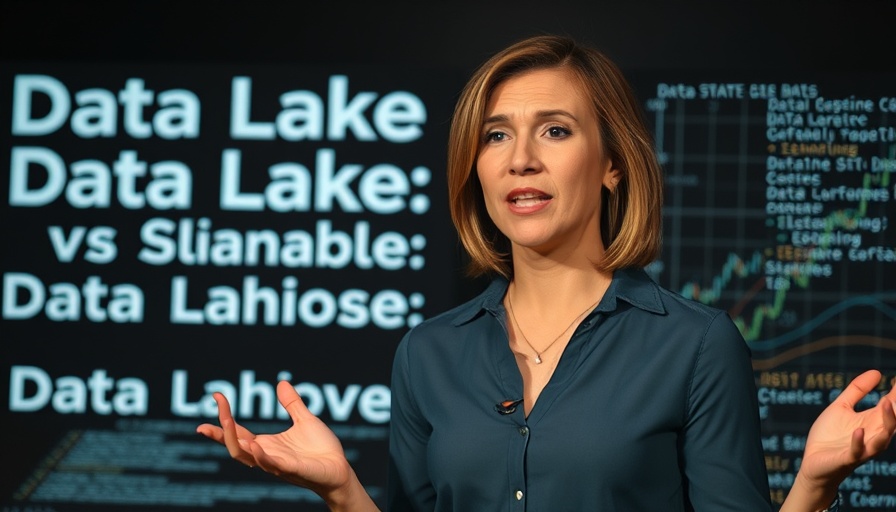
Understanding Retrieval-Augmented Fine-Tuning (RAFT)
The world of artificial intelligence is rapidly advancing, especially with techniques that enhance the performance of language models. One such innovative method is Retrieval-Augmented Fine-Tuning, or RAFT, a hybrid approach designed to merge the advantages of retrieval-augmented generation (RAG) and traditional fine-tuning methods. With RAFT, organizations can leverage domain-specific data while improving accuracy and efficiency in generating responses.
In 'What is Retrieval-Augmented Fine-Tuning (RAFT)?', the discussion dives into how this innovative technique enhances AI capabilities, exploring key insights that sparked deeper analysis on our end.
The Importance of RAFT in Specialized Domains
In business scenarios where precise and tailored responses are crucial, RAFT stands as a beacon for improving language model capabilities. Think of it as a study strategy that prepares students not just for examinations but equips them to tackle real-world situations. Traditionally, fine-tuning involves training a model on vast datasets to control its output. However, this method can lead to outdated or irrelevant results without the ability to adapt or incorporate new information.
Conversely, retrieval-augmented generation allows models to access up-to-date information at the moment of inference. However, without effective training on pertinent documents, the output's relevance can greatly diminish. This is where RAFT excels by providing a structured approach that teaches models when to seek information, how to utilize it correctly, and the ethical implications surrounding data use—echoing the need for robust AI policy and governance in Africa.
The Analogy: A Deep Dive into Learning Methods
To explain RAFT further, let’s use an easy analogy. Consider preparing for an exam. Fine-tuning is like cramming for a closed book exam—you depend solely on what you've memorized, making it challenging if the questions veer towards areas you didn’t focus on. RAG, on the other hand, is more flexible but risky—imagine going into an open book exam without having studied. The exam can present pertinent questions, but without knowledge of where to find answers in the resource materials, performance suffers.
RAFT is the optimal approach, akin to taking an open book exam after attending all the lectures and understanding the material. This strategy not only allows for real-time information use but also prepares the model to discern valuable data from irrelevant noise, thus improving overall output accuracy. RAFT essentially functions by teaching the model how to effectively utilize both newly retrieved documents and previously learned knowledge, leading to results that are more robust, transparent, and ethical.
Implementation Mechanics of RAFT
Implementing RAFT requires a thoughtful training methodology, leveraging various techniques to develop a comprehensive dataset. For example, when training on the query, “How much parental leave does IBM offer?”, the model must scan through two types of documents: core documents that directly respond to the query and tangent documents that may provide unrelated information. Such a divided approach reinforces the model’s ability to pick relevant outputs while ignoring distractions, thus increasing precision and reliability. This method also minimizes inaccuracies or "hallucinations"—instances where the model produces false information.
Moreover, by creating different document sets—one that blends both core and tangent documents and another that consists only of tangent documents—RAFT teaches the model the importance of relying on intrinsic knowledge versus presenting incorrect information.
Fostering Robust Model Performance
A key aspect of RAFT is the emphasis on chain-of-thought reasoning. This encourages models to quote specific sources used in their responses, enhancing the transparency of answers and reinforcing accountability. Consequently, users gain confidence in the information provided, knowing it’s sourced responsibly. Such practices align well with AI policy and governance objectives in Africa, emphasizing the need for accountability and accuracy in AI solutions.
Conclusion: The Impact of RAFT on AI Policy in Africa
As AI technologies continue to permeate various sectors, understanding techniques like RAFT could play a pivotal role in shaping better AI governance policies in Africa. By harnessing the power of RAFT, companies can significantly enhance the performance of their language models, ensuring that they serve their specific contexts better. As businesses, educators, and policymakers explore the nuances of AI, the need for sound policies, ethical considerations, and inclusive dialogues will remain ever crucial.
If you are involved in shaping the future of AI in your community, explore how retrieval-augmented fine-tuning can bolster your AI strategies while adhering to a strong governance framework. The time to act is now—embrace these technological advancements that are transforming our world.
 Add Row
Add Row  Add
Add 




Write A Comment